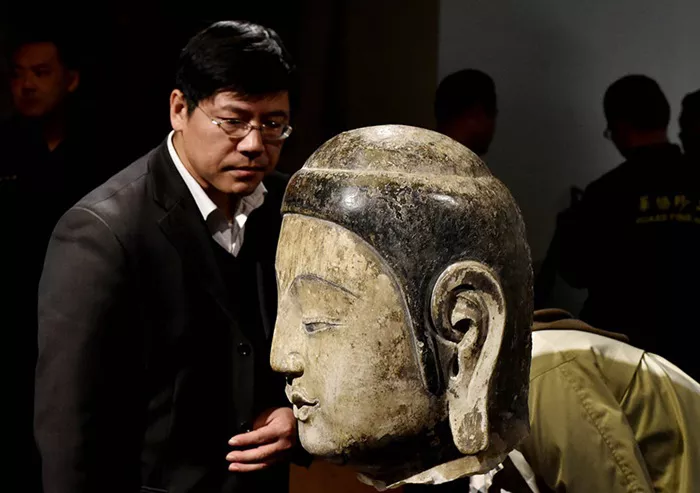The Thai Department of Fine Arts has announced a major archaeological discovery at a major Buddhist site in northeastern Thailand.
Archaeologists have discovered a clay container beneath the temple complex of Wat Dhammachak Semaram, famous for its massive reclining sandstone Buddha. The container contained a large collection of gold, silver and copper ornaments dating back to the Dvaravati period.
The significant offering of Buddha images was found about 4.3 feet below the ground and echoes similar offerings found at other famous sites such as Phu Khao Thong in Ranong and Tha Chana in Surat Thani.
The range of precious religious objects, from gold rings to exquisite relief carvings of Buddha images, highlights the region’s sophisticated artistic attainments and the extensive cultural exchange networks that flourished in Southeast Asia.
The huge reclining Buddha, believed to have been carved in 657 AD, is housed in the remains of a brick temple that is now a museum-style exhibition hall. The Buddha’s head faces south and his face faces east.
While installing an underground drainage system around the Buddha, workers came across a broken ceramic container. The container contained a gold ring, silver earrings, and a unique pair of bronze spiral hoop earrings. Given the temple’s religious significance during the Dhārapatti period, the earrings are believed to have been an offering to the Buddha.
Following this unexpected discovery, archaeologists conducted further excavations at the site. Subsequent excavations revealed three more artifacts embellished with religious imagery.
The objects are made of embossed gold and pewter plates, known locally as “chins,” according to Archaeology Magazine.
The most important of these worship objects, measuring 3.15 x 4.9 inches, depicts the Buddha sitting cross-legged on a lotus pedestal, conveying spiritual teachings and wisdom through a hand gesture known as the “Vitarka Mudra,” according to Heritage Daily.
The Buddha’s spiral curls, huge halo, long earlobes, and long robes draped over the shoulders are unmistakable representations of the Dhārapatti period, Archaeology Magazine noted. A perforation at the top of the statue suggests to archaeologists that the statue may have been worn or displayed.
The second relief found was damaged. However, the center relief, which features the Buddha in flowing robes and accompanied by two attendants, is still legible. Archaeologists believe that one of the attendants represents the Phra Phrom, the Thai symbol of the Hindu god Brahma.
Behind the reclining Buddha head, the final artifact was found, made of hardened soil and consists of three stacked metal plates separated by thin mortar. It was placed near the highly revered Buddha statue, leading archaeologists to believe it was intentionally placed as part of a ritual, Archaeology Magazine reported.
Wat Dhammachak Semarang was built during the reign of King Rama Raj. In addition to the Buddha statue, another notable artifact found at the site is a sandstone Dhammachakra with carvings of forest deities associated with the sacred Bodhi and Banyan trees on either side.

